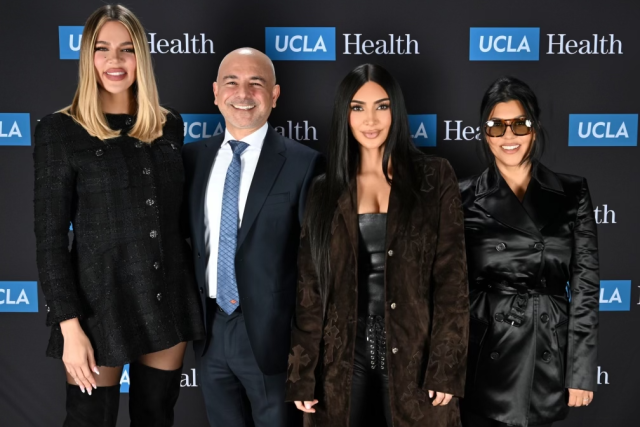In 2006, the Centers for Disease Control and Prevention released new guidelines recommending that every patient between the ages of 13 and 64 be offered an HIV test on an opt-out basis in all health care settings, without the requirements of written consent or prevention counseling.
The CDC's recommendations sparked significant debate about whether existing state laws would conflict with the guidelines and impede their widespread implementation and raised questions about threats to patient autonomy.
The CDC's recommendations sparked significant debate about whether existing state laws would conflict with the guidelines and impede their widespread implementation and raised questions about threats to patient autonomy.
But a new UCLA study published in the Feb. 17 issue of the Annals of Internal Medicine has found that the majority of states have laws that do not interfere with implementation of the guidelines, and that contrary to what some have argued, the guidelines include protections for the patient.
According to the CDC recommendations, health care providers offering HIV tests are required to provide patients information about the test, ask if patients have any questions and inform them that they have the right to decline or opt out of the test.
"Patient advocates have voiced opposition to opt-out screening for HIV because of legitimate concerns that it would not ensure that patients feel they actually have the choice to accept or decline testing," said Dr. Anish P. Mahajan, lead author of the study and a Robert Wood Johnson Foundation Clinical Scholar in the division of general internal medicine and health services research at the David Geffen School of Medicine at UCLA.
"We found that the CDC guidelines' definition of 'opt-out' does require specific protection of patient autonomy, which in many cases is not required by state laws," he said. "Beyond simply complying with state laws, providers, consumer groups and other stakeholders should ensure that these protections are adhered to."
Timely HIV testing continues to be a major public health challenge in the United States. Of the 1 million people infected with HIV nationwide, 300,000 are unaware of their status and unknowingly infect others, accounting for the majority of new HIV infections, according to the CDC. For this reason, the CDC issued the new guidelines for opt-out HIV screenings. Despite the revised guidelines, however, low HIV screening rates persist.
State law on HIV testing also has been widely assumed to be a barrier to implementing the recommendations. The researchers performed a state-by-state review of all statutes pertaining to HIV testing and systematically assessed the consistency of these laws with the new recommendations.
Major findings of their analysis include:
- 34 states and the District of Columbia have laws that are consistent with or neutral toward the recommendations.
- In the two years since the release of the recommendations, nine states have passed new laws to move from inconsistent to consistent with the guidelines.
- 16 states still have laws that are barriers to the CDC recommendations.
"Opt-out screening could still result in unintended consequences, such as patients avoiding the doctor because they do not want to be asked about HIV testing," said Mahajan, who is currently looking at how opt-out HIV screening compares with the more traditional opt-in HIV screening in a collaborative project among UCLA, Los Angeles County and safety-net clinics in South Los Angeles. Results of this research are expected later this year.
Study co-authors are Martin F. Shapiro and William E. Cunningham of the David Geffen School of Medicine at UCLA, Lara Stemple of the UCLA School of Law, and Jan. B. King of the Los Angeles County Department of Public Health. Cunningham is also associated with the UCLA School of Public Health.
The Robert Wood Johnson Clinical Scholars Program and grants from the National Institutes of Health to the Charles Drew/UCLA Project EXPORT and to the UCLA/Drew Resource Centers for Minority Aging Research/Center for Health Improvement of Minority Elderly funded this study.
The Robert Wood Johnson Clinical Scholars Program has for more than three decades fostered the development of physicians who are leading the transformation of health care in the United States through positions in academic medicine, public health and other leadership roles. Through the program, future leaders learn to conduct innovative research and work with communities, organizations, practitioners and policymakers on issues important to the health and well-being of all Americans.
The Division of General Internal Medicine and Health Services Research within the department of medicine at the David Geffen School of Medicine at UCLA provides a unique interactive environment for collaborative efforts between health services researchers and clinical experts with experience in evidence-based work. The division's 100-plus clinicians and researchers are engaged in a wide variety of projects that examine issues related to access to care, quality of care, health measurement, physician education, clinical ethics and doctor-patient communication. Researchers in the division have close working relationships with economists, statisticians, social scientists and other specialists throughout UCLA and frequently collaborate with their counterparts at the RAND Corp. and the Charles Drew University of Medicine and Science.



